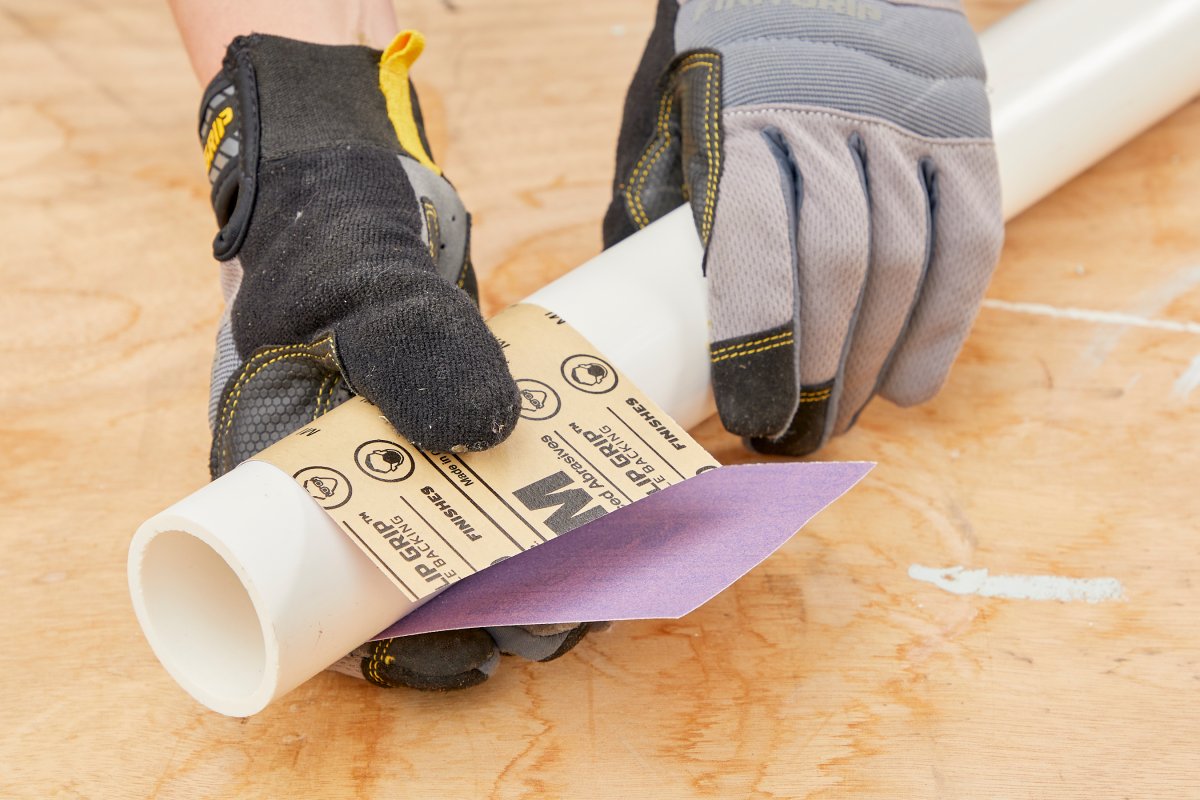We may earn revenue from the products available on this page and participate in affiliate programs. Learn More ›
Tough and durable yet easy to cut, polyvinyl chloride piping (PVC), originally developed for plumbing, is ideal for use in a variety of do-it-yourself projects, from wall-mounted organizers and funky herb planters to wine racks and even lighting fixtures.
While the piping comes in a spectrum of brights these days, you’ll still want to learn how to paint PVC if you’ve got a more sophisticated palette in mind. Except there’s one hitch: Due to a molecular makeup that prevents most liquids from bonding to its surface, paint on PVC has always been likely to flake, bubble, or rub right off.
Fortunately, recently developed spray paints that chemically bond with all kinds of plastics make it possible for determined DIYers to paint PVC pipe. Just keep in mind that while some plastic-rated paints purport not to require special preparation, we advise that you follow the prep steps here for the best possible results.
Tools & Materials
Bobvila.com may earn a commission from purchases made through these links.
How to Paint PVC Pipe
The key to a good paint job is to use a spray paint that’s rated for use on plastic. Krylon Fusion is a consumer favorite that’s widely available, as is Rust-Oleum paint for plastic. Once you have the right paint in hand, be sure to follow these steps for surface preparation.
Step 1: Prepare your work area.
Plan to paint PVC on a low-humidity day, ideally between 50 and 85 degrees Fahrenheit. Choose a well-ventilated yet wind-free area to work in, such as a garage with doors and windows open for airflow. Note that acetone is extremely flammable, so it should be used and stored away from heat sources. Do not smoke while working with acetone, and wash up well after use.
Step 2: Sand the pipe.

Lightly scour the PVC pipe’s exterior by hand with 220-grit sandpaper. Skip the electric sander, as such a tool can wear down the pipe too much, too fast. Sand in all directions to avoid straight-line striations that can create an undesirable grooved surface. Be gentle, so you won’t weaken the pipe, but be thorough enough to avoid creating uneven surfaces. Have plenty of sandpaper on hand, because the waxes in PVC pipe will come off on the paper, causing it to lose roughness.
Step 3: Clean the pipe.

Wearing rubber gloves, dampen a clean rag with acetone, and then wipe the surface of the PVC pipe. Allow to dry for 20 to 30 minutes. The acetone will remove all sanding dust while swelling the surface of the PVC to make it more porous for painting.
Step 4: Protect the space from paint spatter.

Lay drop cloths, plastic sheeting, or old newspapers over the floors or walls that could be subject to splatter or overspray, then set up the pipe for spray painting. If you’re painting long pieces of pipe, cover a wall, ladder, or chair with sheeting and prop the pipes against it. (Or, you might stand long pieces on a sturdy dowel for support so you can access all sides at once.) Short pieces of PVC may be able to stand without additional support, or propped up on plastic containers inside a cardboard box, making it simpler to get an all-over coat of paint.
Step 5: Apply spray paint.

Shake thoroughly for 15 to 20 seconds. In a side-to-side sweeping motion, spray-paint the pipe, starting from the top and working your way down to the bottom. Paint PVC in thin, consistent layers, overlapping the paint as you move down the pipe, to avoid any drips.
Step 6: Apply a second coat of paint.

Allow paint to dry per manufacturer’s instructions 20 to 30 minutes, before applying a second coat. If you had to lay the piping down to paint, wait until the first side is dry and then turn it over to access the other side. Avoid overlapping spray on areas you’ve already painted to achieve a nice, even coat. As in all spray-painting jobs, you’ll need to apply several coats in thin layers until the “true color” is reached.
Step 7: Let the PVC dry for 24 hours.
Allow paint to air-dry and cure for at least 24 hours before using it in your project. For projects that could scrape or nick the pipe’s new coat of paint in the process, consider waiting a full week. If you’re uncertain, check the paint can for specific manufacturer-recommended drying times. Once your project is complete, keep painted pipes clean by wiping gently with a water-dampened rag.


